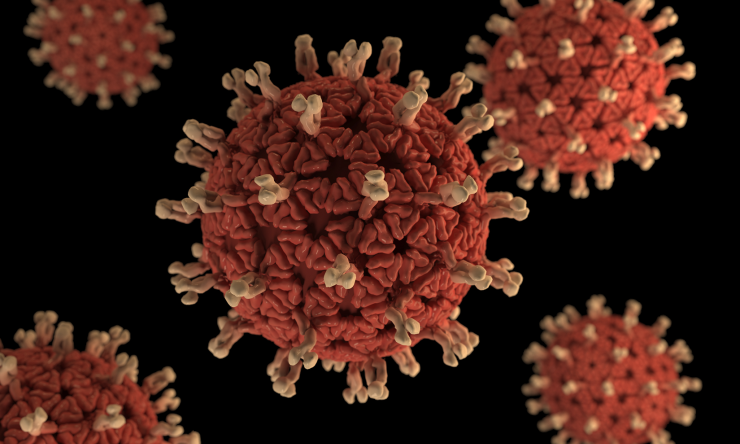Rotavirus protein NSP4 manipulates gastrointestinal disease severity
Researchers at Baylor College of Medicine and collaborating institutions have improved our understanding of how rotavirus, the most common cause of acute gastroenteritis in children, makes people sick. The study published in Science Advances is among the first to show that the rotavirus protein NSP4 is both necessary and sufficient for multiple aspects of rotavirus infection by disrupting calcium signaling not only within infected cells but also in nearby uninfected cells. These disruptions in calcium signaling affect rotavirus disease severity, providing new insights into how NSP4’s function influences rotavirus virulence. The findings suggest that manipulating NSP4 could lead to new strategies to prevent or treat rotavirus infections.
“Rotavirus alone accounts for one-quarter of all cases of severe pediatric acute gastroenteritis, which typically presents with watery diarrhea, vomiting, fever and abdominal pain. Currently, nearly 500,000 children worldwide die from this condition every year,” said corresponding author Dr. Joseph Hyser, associate professor of molecular virology and microbiology, as well as part of the Alkek Center for Metagenomic and Microbiome Research and member of the Dan L Duncan Comprehensive Cancer Center at Baylor. “Although oral rehydration therapy and live-attenuated rotavirus vaccines have helped reduce the burden of rotavirus acute gastroenteritis in children worldwide, there is still room for improvement.”
In the current study, Hyser and his colleagues looked deeper into how functions of NSP4 during rotavirus infection contribute to disease severity in hopes of finding a novel approach to treat or prevent the disease. In a previous study, the researchers discovered that rotavirus triggers aberrant calcium signals known as ‘intercellular calcium waves’ that radiate from infected cells to neighboring uninfected cells and that inhibition of these signals lessened disease severity.
“The results indicated that it was likely that calcium waves contributed to rotavirus replication and virulence; however, it was not clear how the virus triggered this signal,” Hyser said. “We already had evidence that placed NSP4 at the top of the list of viral proteins that could be involved in triggering calcium waves.”
Working with existing human and porcine virulent and attenuated rotavirus strains, as well as novel genetic recombinant strains generated by a reverse genetics system, the team examined the role of NSP4 in the induction of calcium waves and its connection to disease severity using a range of experimental models, including cells grown in the lab, intestinal organoid cultures and animal models.
The researchers found that the ability of rotavirus to generate calcium waves was fully attributable to NSP4, such that expression of NSP4 in cells, even in the absence of rotavirus infection, generated calcium waves indistinguishable from a native infection.
Importantly NSP4 from attenuated rotaviruses, which cause milder or no disease, induced fewer calcium waves than NSP4 from virulent strains and inserting the attenuated NSP4 into a virulent rotavirus strain both decreased the number of calcium waves it produced and decreased its ability to cause diarrhea in an animal model.
“We found that the ability of rotavirus to generate calcium waves goes hand in hand with NSP4, expression of NSP4 alone is sufficient to generate calcium waves, and multiple aspects of rotavirus disease severity correlated with the ability to generate calcium waves,” Hyser said.
Furthermore, calcium waves also triggered an immune response, implicating calcium dysregulation as a means of viral recognition.
“Altogether, the evidence suggested that NSP4 seemed to be involved in inducing calcium waves linked to both rotavirus disease severity and host cell responses to this aberrant level of calcium signaling,” Hyser said.
The findings may apply beyond rotavirus to other viruses carrying proteins similar to NSP4 that could be involved in disrupting calcium signaling.
Other contributors to this work include J. Thomas Gebert, Francesca J. Scribano, Kristen A. Engevik, Ethan M. Huleatt, Michael R. Eledge, Lauren E. Dorn, Asha A. Philip, Takahiro Kawagishi, Harry B. Greenberg and John T. Patton. The authors are affiliated with one or more of the following institutions: Baylor College of Medicine, Indiana University and Stanford University School of Medicine.
The study was supported by National Institutes of Health grants (NICH R01AI158683, R01DK115507, NIH S10OD028480, NIH F30DK131828, NIH F31DK132942, NIH F32DK130288 and NIH T32DK007664) and the McNair Foundation M.D./Ph.D. Scholars Program.







 Credit
Credit


